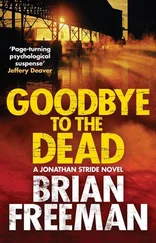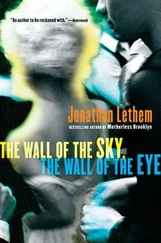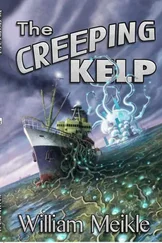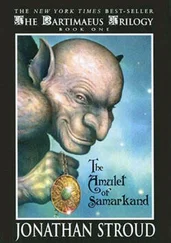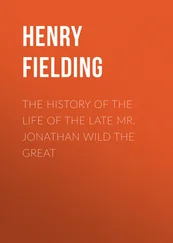Dazzling light burst upon us—harsh, electrical, and blinding.
“Aah! Turn off the light! Turn off the light!”
“We can’t see….”
“What are you playing at?” the old man said. “There’s nothing there….”
“Nothing that you can see, you mean.” With a curse, Lockwood jumped over the chains, ran for the stairs. I stepped out and, still half-blinded, threw a speculative salt-bomb on the flagstones in the center of the hall. Holly and George had done the same: triple starbursts, triple scatterings like snow.
Lockwood was at the wall. He stabbed at the switch—darkness returned.
And the radiant boy was right beside him, reaching out with tiny fingers toward the old man’s neck.
Lockwood fell on Skinner, protecting him with his body. He lashed out with his rapier. The ghost moved back, then tried to dart around the blade, its eyeless sockets staring. Lockwood and the old man collapsed back onto a nearby table, knocking into a tall and intricate model sailing ship made out of matchsticks. The ship spun to the edge of the table and hung there, teetering on the brink.
Lockwood’s sword moved so fast it could scarcely be seen, blocking the feints and darts of the ghost’s probing hands. George and I ran forward, blades patterning the air, seeking to create an iron wall above the table that the child couldn’t cross. The ghost was pinned in a narrow space between our whirling blades.
Now here came Kipps, his goggles glinting. He had a salt-bomb in his hand. He threw it hard against the ceiling so that salt came down upon the ghost in a fiery rain. The iron and salt together was enough. The ghost trembled. It broke apart and fractured into plaintive strips that hung there, dancing.
The model ship tipped over. It smashed into a million pieces on the floor.
The fragments of the ghost grew faint. Its radiance drew together into a coiling wisp of light that fled across the hall and sank beneath a flagstone at the entrance to the kitchen.
There was darkness in the room.
“ Fantastic …” That was Kipps’s voice. “I’ve been wanting to do something like that for years .”
Lockwood flicked at the switch. “Okay,” he said cheerily. “ Now we can have the light on.”
As case finales go, it wasn’t the most decorous we’d seen: a pop-eyed old ex-vicar, bewildered, bruised, and winded, sprawled over an ornamental table with Lockwood’s elbow in his belly, a letter rack wedged in his pajamas, and the fragments of a matchstick tea-clipper ship made by (as we later learned) his favorite grandfather scattered all around him.
It might have been even worse if we could have understood his breathless moans.
I took a stab, though. He didn’t sound happy to me.
“Oh, quit complaining,” I snapped. “You’re alive, aren’t you?”
“Yes, you’ve lost a model,” George said, “but you’ve gained an exciting three-D jigsaw. There’s always a bright side, if you choose to look for it.”
It’s safe to say he didn’t.

We resolved the case the following morning. With old Reverend Skinner confined to his room, Kipps and Lockwood took their crowbars and pried up the flagstone beneath the kitchen door. After half an hour’s digging they located a set of small bones, a child’s, complete with tattered fragments of clothing. George estimated them to date from the eighteenth century. His theory was that the boy had been a beggar, who, after having knocked on the door, was taken in by whoever owned the house and then robbed, killed, and stowed under the floor. Personally I didn’t think a beggar was a very likely candidate for robbery, but perhaps he’d been an unusually successful beggar. Up until then, anyhow. Whatever. It was impossible to know.
So that was the Old Sun Inn cleared; we’d rid Aldbury Castle of one of its ghosts, and we hadn’t been there a day. It put us in a cheerful mood. Danny Skinner, though bug-eyed at the sight of the bones, was delighted, too. After a late breakfast, he volunteered to take us on a tour of the village, to point out the other supernatural highlights we had to look forward to.
Our first stop was the church next door. It was a neglected-looking building of flint and brick, with a stubby tower and a vestry roof covered with a tarp. Its churchyard was clearly very old, surrounded in parts by a stone wall, in parts by hedges on a raised embankment of earth. The gravestones were of the same material as the cross on the green, and many were worn away, their inscriptions gone. Some hung at extreme angles; one or two had fallen. It was a peaceful place, if shunned and overgrown.
“This is where the Creeping Shadow walks,” Danny told us. “Little Hetty Flinders saw it here, with the dead rising from their tombs at its command. That’s got to be high on your list, Mr. Lockwood, sir.” Since our success with the Shining Boy, the kid’s hostility had vanished; he was our jug-eared cheerleader, marching proudly at our side. “Reckon you’d fix it, no problem.”
“You didn’t see the Shadow here yourself?” Lockwood stared up at the stone tower, where crows circled against the pale sky.
“Not me. I saw it up in the eastern woods, on Gunner’s Top. That’s where that lane goes, see? Half a mile straight, you get to the place. Had spirits following it there, too—the dead from this churchyard, most like. Pale, shapeless things, caught up in the Shadow’s burning cloak. Well, you’ll see for yourself,” he added, seeming not to hear George’s skeptical sniff. “You’ll fix it, you will.”
“I wouldn’t mind a word with Hetty Flinders,” Lockwood said.
“Can’t help you there. She’s ghost-touched now. They caught her outside her house, with her best blue frock on, poor thing. The other kids in the village’ll back me up, though. Shall we head on?”
As we descended onto the lane, the peace of Aldbury Castle was broken by the sound of revving engines. Four vehicles—three cars, and a small canvas-topped truck—had driven out of the woods from the direction of the station. They slowed to cross the bridge, honking their horns at a gaggle of geese that had strayed into the road, then sped across the green. The cars were black; the truck’s canvas side was stenciled with the Rotwell lion. Turning right at the Old Sun Inn, the convoy drove up the lane, past the church and into the eastern woods. Unsmiling men looked out at us as they went by. The noise faded. Clouds of dust slowly settled back onto the road.
“That Rotwell bunch again.” Danny Skinner spat feelingly into the grass. “On their way up to the institute. They couldn’t give a fig about us. They’re not a proper agency. Not like Lockwood and Company. They don’t get things done.”
“Quite so…” Lockwood was gazing up toward the woods. “Danny, I want you to continue the tour with Holly, George, and Quill. Show them the rest of the village. Lucy and I will just take a quick walk up to Gunner’s Top, where you saw the Shadow. I’d like to get a feel for the area. We’ll catch up with you shortly.”
Lockwood and I watched as the little party continued on without us.
“It’s not really Gunner’s Top you’re interested in, is it?” I asked.
“The woods? That’s just some trees. No, I want to see what lies beyond it, in the fields where this ancient battle happened. Come on.”
We took the lane below the church and followed it out of the village and into the woods. The lane crossed a narrow stream on a rickety wooden bridge; after that, as Danny Skinner had said, it proceeded more or less straight through the oaks and beeches up steadily rising ground. The woods still had its winter colors, its cloak of grays and browns; but here and there the spring rebirth was beginning—bright fronds breaking through the earth, the faintest green haze showing on the trees.
Читать дальше



